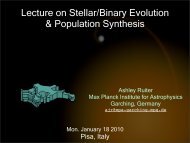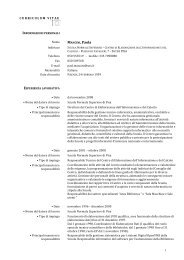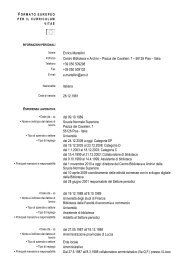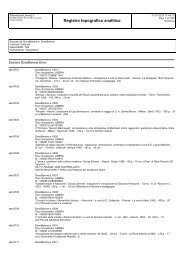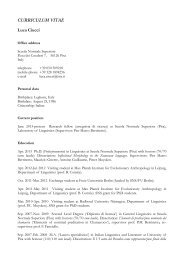Metrics of curves in shape optimization and analysis - Andrea Carlo ...
Metrics of curves in shape optimization and analysis - Andrea Carlo ...
Metrics of curves in shape optimization and analysis - Andrea Carlo ...
Create successful ePaper yourself
Turn your PDF publications into a flip-book with our unique Google optimized e-Paper software.
<strong>shape</strong> <strong>analysis</strong> where we study a family <strong>of</strong> <strong>shape</strong>s for purposes <strong>of</strong> statistics,(automatic) catalog<strong>in</strong>g, probabilistic model<strong>in</strong>g, among others, <strong>and</strong> possiblycreate an a-priori model for a better <strong>shape</strong> <strong>optimization</strong>.1.2 CurvesWe will use formulæ <strong>of</strong> the form A := B to mean that the formula A is def<strong>in</strong>edby the formula B.S 1 = {x ∈ lR 2 | |x| = 1} is the circle <strong>in</strong> the plane. S 1 is the template for allpossible closed <strong>curves</strong>. (Open <strong>curves</strong> will be called paths, to avoid confusion).Def<strong>in</strong>ition 1.1 (Classes <strong>of</strong> <strong>curves</strong>) • A C 1 curve is a cont<strong>in</strong>uously differentiablemap c : S 1 → lR n such that the derivative c ′ (θ) := ∂ θ c(θ) existsat all po<strong>in</strong>ts θ ∈ S 1 .• An immersed curve is a C 1 curve c such that c ′ (θ) ≠ 0 at all po<strong>in</strong>tsθ ∈ S 1 .c : S 1 → c(S 1 )✓✏↦→✒✑Note that, <strong>in</strong> our term<strong>in</strong>ology , the “curve” is the function c, <strong>and</strong> not just theimage c(S 1 ) <strong>in</strong>side lR n .Most <strong>of</strong> the theory follow<strong>in</strong>g will be developed for <strong>curves</strong> <strong>in</strong> lR n , when thisdoes not complicate the math. We will call planar <strong>curves</strong> those whose imageis <strong>in</strong> lR 2 .The class <strong>of</strong> immersed <strong>curves</strong> is a differentiable manifold. For the purposes<strong>of</strong> this <strong>in</strong>troduction, we present a simple, <strong>in</strong>tuitive def<strong>in</strong>ition.Def<strong>in</strong>ition 1.2 The manifold <strong>of</strong> (parametric) <strong>curves</strong> M is the set <strong>of</strong> allclosed immersed <strong>curves</strong>. Suppose that c ∈ M, c : S 1 → lR n is a closed immersedcurve.• A deformation <strong>of</strong> c is a function h : S 1 → lR n .• The set <strong>of</strong> all such h is the tangent space T c M <strong>of</strong> M at c.• An <strong>in</strong>f<strong>in</strong>itesimal deformation <strong>of</strong> the curve c 0 <strong>in</strong> “direction” h will yield (onfirst order) the curve c 0 (u) + εh(u).• A homotopy C connect<strong>in</strong>g c 0 to c 1 is a cont<strong>in</strong>uously differentiablefunction C : [0, 1] × S 1 → lR n such that c 0 (θ) = C(0, θ)<strong>and</strong> c 1 (θ) = C(1, θ).By def<strong>in</strong><strong>in</strong>g γ(t) = C(t, ·) we can associate C to a path γ :[0, 1] → M <strong>in</strong> the space <strong>of</strong> <strong>curves</strong> M, connect<strong>in</strong>g c 0 to c 1 .Mhc 0c 1When deal<strong>in</strong>g with homotopies C = C(t, θ), we will use the “prime notation” C ′for the derivative ∂ θ C <strong>in</strong> the “curve parameter” θ, <strong>and</strong> the “dot notation” Ċ forthe derivative ∂ t C <strong>in</strong> the “time parameter” t.3


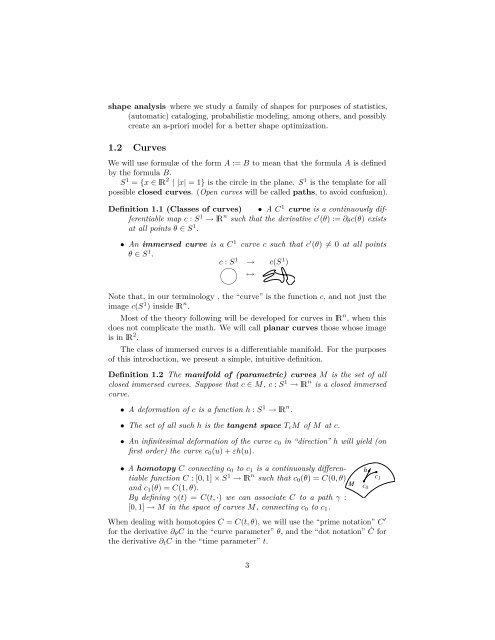

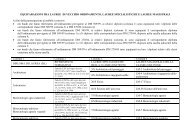
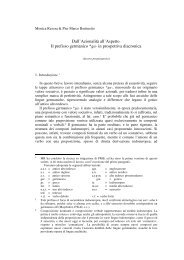
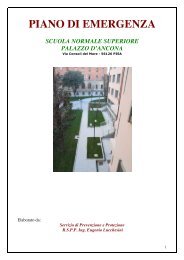
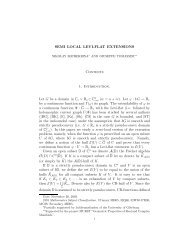
![4. Ghost [Å] vowels in French - Laboratorio di Linguistica](https://img.yumpu.com/49999334/1/184x260/4-ghost-a-vowels-in-french-laboratorio-di-linguistica.jpg?quality=85)


